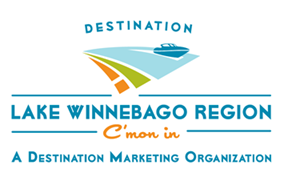Reach Out for Your ROI
04/04/2019
By Ronnie Wendt
Do you track the return on investment (ROI) of your events?
Before answering, “Of course,” with an eye roll for added effect, consider this: A recent Harvard Business study highlights that two out of three companies fail to measure full event impact.
The survey of 700 senior executives, titled “The Event Marketing Evolution: An Era of Data, Technology and Revenue Impact,” finds 90 percent of companies prioritize staging events for customers and potential customers, and the fastest-growing companies are increasing their event activity. But the same study also reveals many companies miss out on the benefits events provide because they fail to track and measure their effectiveness.
In fact, only 23 percent of those surveyed report they can accurately calculate ROI from their meetings and events. Those who do track ROI, share that they train their focus on top-of-the-sales-funnel activities, such as the number of attendees, the quantity of leads generated and even the amount of social media mentions.
However, these very metrics only provide a snapshot of an event’s true ROI. They do not consider the quality of the audience; how that audience viewed the event itself, from speakers to location; how long attendees stayed at the event; or if they even found the event valuable.
Though Jennifer Rzepka, CAE, vice president of Svinicki Association Management, Inc. (SAMI), says she cannot speak to why some event organizers fail to assess ROI, she does stress its importance. SAMI is a Milwaukee-based association management company and under that umbrella helps its customers (industry associations) plan and execute meetings and events. Associations, she says, focus on how much money an event brings in but sometimes overlook the less tangible items when determining ROI.
“But assessing your ROI is critically important,” she states. “We find that a lot of times the focus is: Did we make money? But it’s important to look at more than that, such as: Was it a good location for the group? Did the format bring in the expected number of people? For us, ROI is the gauge that tells us the success of each piece, not just the bottom line.”
Set Concrete Goals
Accurately calculating ROI requires planners to set meaningful goals for the event itself, reports Tifani Jones, corporate director of sales for Kalahari Resorts & Conventions.
Jones, who works with event planners to calculate ROI in all measurement areas, states, “You have to go into it knowing specifically what you want the result to be. What is important to some events may not be a priority for others.”
For example, if the event is tied to a company’s product rollout, then measuring sales after it is over is essential. But if the meeting serves as an association’s primary funding mechanism, then it is important to measure donations and profit. That same association also may want to examine whether its members and vendors were engaged and happy with the event. “They need them to be happy with it to ensure their continued support,” Jones explains.
Jones also recommends asking key questions about an event while setting goals. “Is your goal to make money? Is it member engagement? Is it to sell products? Is it to educate others,” Jones asks. “Companies really need to look at this, and this is where a professional meeting planner comes into play because they can help organizers and decision makers understand the questions they should be asking before they plan the event itself.”
The answer to these questions can help organizers set concrete goals. What is the event’s revenue goal? What is the goal for registration? What is the goal for actual attendance? What is the goal for raising brand awareness?
Once goals are in place, it becomes easier to set a budget around them. For instance, if a company deems training as its top priority, it can devote a larger chunk of funds for that purpose. If the highlight of the conference is a gala awards event, planners can put more money toward that. “Budget for the things that provide value [and help you achieve your goals],” Jones says.
Gather Data
Just as excitement builds leading up to an event, the case for ROI multiplies after the event ends.
“The biggie is going to be how the financials came together,” says Jones. “Did you work within your budget? Did you match your revenue goal? Did your registration numbers match your registration goal?”
There may be sub goals to consider as well. If an association recognized the need to reach younger members and set a goal to raise that number by 25 percent, then it’s important to closely examine the registrations and to evaluate the types of attendees. “Are they first-time attendees or have they attended before?” Jones asks.
Rzepka states the plan is typically to grow the event every year and to generate a profit. But she adds, “Sometimes a group will expect less because they moved to a new location or changed the time of year that they hold their event,” she says. “ROI is a good tracking measure because it helps us see how we’ve been doing over time. Have we been growing by 20 percent every time we change locations? Have we made money every year? We will go back a decade and look for trends. We might see that we made a lot of money in one particular year. What was the difference that year? Then we will consider implementing the things that made a difference in future years.”
Survey Your Attendees
“Build the Best ROI Methodology for Your Corporate Event,” a blog on the Kalahari website, recommends key areas to track after an event, though there are many more:
- How many returning attendees signed up for the event? How much did you spend on marketing to them?
- How many new attendees registered? How much money did you spend to attract them?
- How many registrants took advantage of discounts, early bird specials, VIP pricing?
- How fast was the check-in process? Did you use self-serve kiosks this year? How much time did they save? Was the process more accurate?
- How many people registered through email campaigns or social media postings?
- What came up in the session poll responses?
- How was session attendance overall and for each breakout program?
- What was said in social media mentions and shares?
Some of these items are easily tracked during an event, through program surveys and actual notations made on the fly. Other items must be tracked after the event. Here, both Jones and Rzepka recommend surveying the audience.
SAMI sends three separate surveys after an event: One to attendees, one to exhibitors and one to those who didn’t attend but are members of the association. The latter is very important, Rzepka says, because the survey asks these individuals things like: “Was it priced too high? Did the location prevent you from attending? Was it timing? If we find that 90 percent of the people didn’t attend because of the location or the pricing, we have some very important changes to consider,” she says.
The exhibitor group is asked how they felt about the value for the price they paid? Did they have enough exposure to attendees? What could be changed to make the event more valuable? “We can use this data to better plan ROI in the future,” Rzepka adds. “If they say they don’t care how much they pay as long as we feed them three meals a day, then we have to recalculate what we provide and make those changes.”
For such surveys to be successful, Rzepka advises meeting organizers to take a critical look at the questions being asked. She recommends crafting survey questions in a way that provides useful information versus disparate data that can complicate spotting trends. SAMI begins this process during the event itself by keeping a running list of things that come up during the event and then creating a survey that includes questions targeting those issues. “We test the questions with others to see if we get the kind of response we are looking for or if they come back and say, ‘Why didn’t you ask me about this?’” she says.
The best questions get specific, Rzepka states. “The questions should ask: ‘Did you like ___?’ But be more specific and ask, ‘Was it problematic that ______?’ ‘Did you find benefit because ___________?’” Rzepka says.
For instance, let’s say a company hosts an event in Bayfield. The survey could ask attendees: Did you like Bayfield as a location? But this is a very open-ended, personally skewed response. But if the survey asks instead: Did you have to come in early because of the location? How long did you have to drive to get there? The survey will gather information that helps organizers determine if they need to expand the dates of the room block in the future, or if the location was too far away for some attendees.
Make the survey questions finely focused, adds Jones. “The survey shouldn’t be too long because you’ll lose people, but you should break the questions down by experience type,” she says. “Was registration and retrieving your badge a smooth process? But then take a step back and ask these questions too: How did you hear about us? How was your registration process before you arrived? What was your registration process the day of the event? Ask about the content at the event too. Did the content inspire you or engage you?”
Do more research after the survey, adds Jones, who recommends calling attendees and asking specific questions to ensure their answers match survey results. “A survey will only get a small percentage of responses. You don’t want to make changes for the following year based on a small number of people,” she explains. “You have to monitor the results for trends, then use the survey feedback to open up additional conversations. Make personal calls to those you trust as stakeholders and ask them the questions that bubbled up in the survey process.”
Finally, as the research identifies areas for improvement, reach out to managers at the venue. “The team at your venue can help support your objectives,” Jones says. “We can share what worked for other events. We can connect you with other planners who faced similar problems. And, we can adjust the environment we provide for your event next year.”











